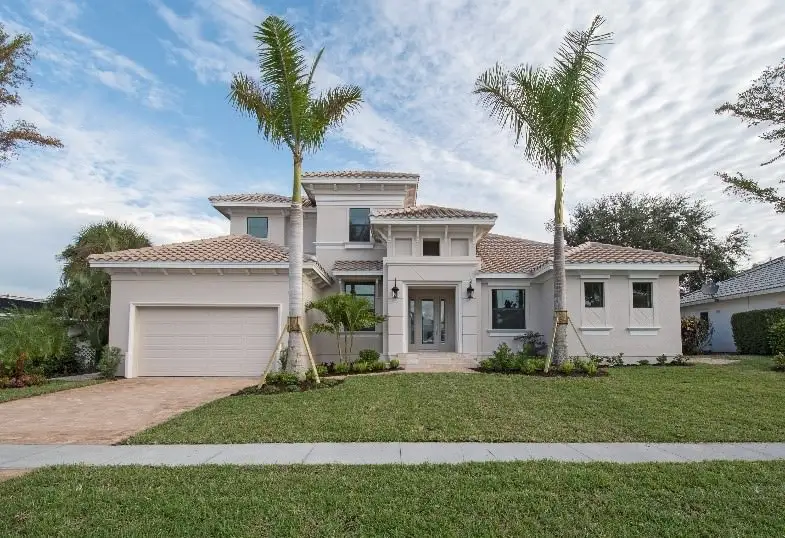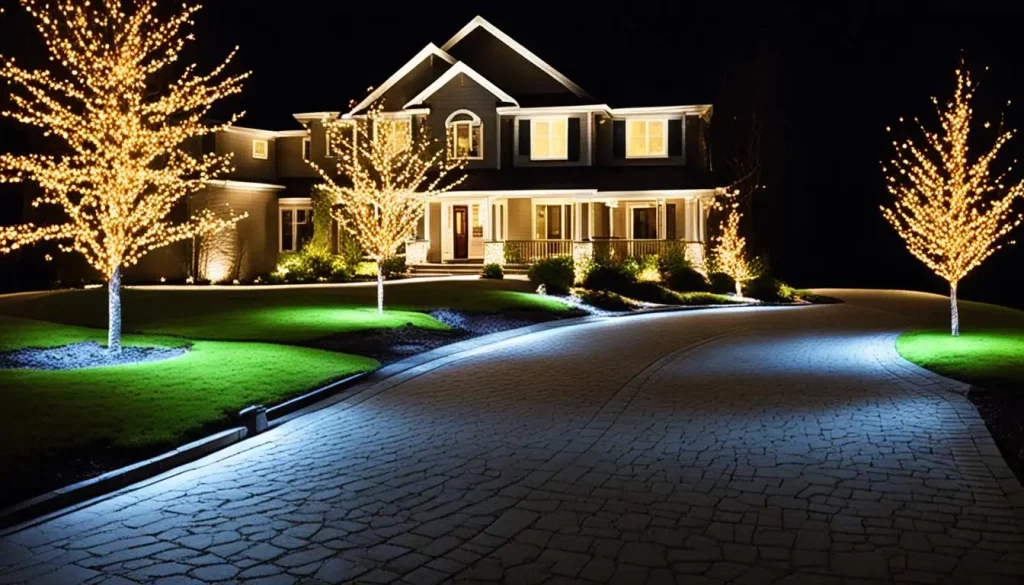In today’s environmentally conscious era, homeowners are increasingly recognizing the advantages of integrating energy-efficient technologies into their homes. By embracing energy-efficient home upgrades, individuals not only contribute to a greener future but also enjoy numerous benefits, both economically and in terms of quality of life. From reducing energy costs to creating a healthier living environment, the advantages are significant.
But how can homeowners navigate the process of incorporating energy-efficient tech into their home builds? Explore further as we delve into the world of eco-efficient home upgrades and the exciting possibilities they offer for eco-friendly living.
Key Takeaways
- Energy-efficient home upgrades, such as proper insulation and energy-efficient appliances, can significantly reduce energy consumption and save money on energy bills.
- Incorporating energy-efficient technology, such as smart thermostats and LED lighting, not only lowers energy usage but also enhances comfort and provides advanced features.
- Eco-friendly living involves minimizing energy usage, conserving water, adopting a zero-waste mindset, and choosing sustainable transportation options.
- Top energy-saving technologies for homes include solar panels, smart thermostats, energy-efficient appliances, energy management systems, and home automation systems.
The Importance of Energy Efficiency
Energy efficiency plays a crucial role in promoting sustainability and reducing environmental impact in our homes. By implementing energy-efficient technologies and practices, homeowners can significantly decrease their energy consumption and carbon footprint, contributing to a more environmentally friendly lifestyle.
One of the main benefits of energy efficiency is the reduction in energy consumption. Energy-efficient appliances, such as LED lightbulbs and ENERGY STAR certified electronics, use less energy while still providing the same level of performance. This not only helps homeowners save money on their energy bills but also reduces the demand for energy production, which often involves burning fossil fuels and contributes to air pollution and climate change.
Moreover, energy efficiency helps to conserve natural resources. By using energy-efficient appliances and upgrading insulation, homeowners can decrease the amount of energy needed to heat and cool their homes. This reduces the reliance on fossil fuels, which are finite resources, and helps to preserve them for future generations. Additionally, energy-efficient homes require less water for heating and cooling, further conserving another valuable resource.

Understanding Energy-Efficient Home Upgrades
When it comes to creating a more sustainable and environmentally friendly home, understanding energy-efficient upgrades is essential. Making energy-efficient upgrades not only benefits the environment but also helps homeowners save money on their energy bills.
Here are some key points to consider when it comes to understanding energy-efficient home upgrades:
- Insulation: Proper insulation is crucial for maintaining a comfortable temperature in your home and reducing energy consumption. Upgrading insulation materials can help prevent heat loss in the winter and heat gain in the summer.
- Energy-efficient appliances: Switching to energy-efficient appliances, such as refrigerators, washing machines, and dishwashers, can significantly reduce energy consumption. Look for appliances with the Energy Star label, indicating that they meet strict energy efficiency guidelines.
- Lighting: Replacing traditional incandescent bulbs with energy-efficient LED lights can lower energy consumption and reduce electricity costs. LED lights are more durable and have a longer lifespan compared to traditional bulbs.
- Smart thermostats: Installing a programmable or smart thermostat allows you to control and adjust your home’s temperature settings, optimizing energy usage. These thermostats can learn your schedule, adjust temperature settings accordingly, and help you save energy when you’re away from home.
Benefits of Incorporating Energy-Efficient Tech
Understanding the importance of energy-efficient home upgrades lays the foundation for realizing the numerous benefits that come with incorporating energy-efficient technology in your home builds. By incorporating energy-efficient tech, you can significantly reduce your energy consumption, leading to lower utility bills and long-term savings. Energy-efficient appliances, such as refrigerators, air conditioners, and water heaters, are designed to consume less energy while providing the same level of performance. This not only helps you save money but also reduces your carbon footprint and contributes to environmental sustainability.
In addition to cost savings and environmental benefits, incorporating energy-efficient tech in your home builds can also improve the overall comfort and quality of living. Energy-efficient windows and insulation help to regulate indoor temperatures, keeping your home cooler in the summer and warmer in the winter. This not only enhances the comfort of your living space but also reduces the need for excessive heating or cooling, further reducing energy consumption and costs.
Furthermore, energy-efficient tech often comes with advanced features and smart technology. For example, smart thermostats allow you to control and schedule your heating and cooling settings remotely, optimizing energy usage and ensuring comfortable temperatures when you need them. Energy-efficient lighting options, such as LED bulbs, last longer and provide better illumination compared to traditional incandescent bulbs.
Incorporating energy-efficient technology into your home builds not only benefits you as a homeowner but also contributes to a sustainable and eco-friendly future. By reducing energy consumption, lowering utility bills, and improving comfort, energy-efficient tech is a valuable investment that enhances the overall quality of your home while reducing your environmental impact.
Key Considerations for Eco-Friendly Living
One important aspect to consider for those seeking to live an eco-friendly lifestyle is to carefully evaluate their daily habits and make conscious choices that prioritize sustainability. By incorporating key considerations into their daily routine, individuals can significantly reduce their environmental impact and contribute to a greener future.
Here are four essential factors to keep in mind when embracing eco-friendly living:
- Energy consumption: Minimizing energy usage is crucial for reducing carbon emissions. Opt for energy-efficient appliances and lighting options, such as LED bulbs, to decrease electricity consumption.
- Water conservation: Conserving water is essential for sustainable living. Install low-flow fixtures, fix leaks promptly, and practice water-saving habits like taking shorter showers and using rainwater for plants.
- Waste reduction: Adopting a zero-waste mindset is beneficial for the environment. Reduce, reuse, and recycle as much as possible. Composting organic waste can also help divert it from landfills and nourish the soil.
- Transportation choices: Opt for eco-friendly transportation options whenever feasible. Consider walking, cycling, or using public transportation instead of driving. If a car is necessary, choose a fuel-efficient or electric vehicle to reduce emissions.
Top Energy-Saving Technologies for Homes
To further enhance eco-friendly living and reduce energy consumption, it is essential to explore the top energy-saving technologies available for homes. These technologies not only help homeowners save money on their energy bills but also contribute to a more sustainable and greener environment.
One of the top energy-saving technologies for homes is solar panels. Solar panels harness the power of the sun to generate electricity, reducing the reliance on traditional energy sources. They can be installed on rooftops or in open spaces to capture sunlight and convert it into usable energy.
Another popular energy-saving technology is smart thermostats. These devices allow homeowners to control and schedule the temperature settings in their homes, optimizing energy usage. Smart thermostats can learn the occupants’ preferences and adjust the temperature accordingly, ensuring comfort while minimizing energy waste.
Energy-efficient appliances and lighting are also crucial in reducing energy consumption. Appliances with the ENERGY STAR label are designed to use less energy without compromising performance. LED lights, on the other hand, are more energy-efficient than traditional incandescent bulbs and have a longer lifespan.
Lastly, home insulation and sealing play a significant role in energy efficiency. Proper insulation prevents heat transfer, keeping the home cooler in summer and warmer in winter. Sealing air leaks also prevents energy loss, ensuring that conditioned air stays inside the home.
How to Implement Energy-Efficient Upgrades
Implementing energy-efficient upgrades in your home is a smart and effective way to reduce energy consumption and create a more sustainable living environment. By making a few simple changes, you can significantly decrease your carbon footprint and save money on your energy bills.
Here are some ways to implement energy-efficient upgrades in your home:
- Install energy-efficient appliances: Replace old, inefficient appliances with new ones that have high energy star ratings. This includes refrigerators, washing machines, dishwashers, and air conditioners. These appliances use less energy and are designed to operate more efficiently, resulting in lower energy consumption and reduced costs.
- Upgrade to LED lighting: Replace traditional incandescent light bulbs with energy-efficient LED bulbs. LED bulbs use significantly less energy and have a longer lifespan, making them a cost-effective and eco-friendly lighting option for your home.
- Improve insulation: Proper insulation helps to maintain a consistent temperature in your home, reducing the need for heating and cooling. Upgrade your insulation in the walls, attic, and floors to prevent drafts and keep your home comfortable year-round.
- Install programmable thermostats: Programmable thermostats allow you to set specific temperature schedules for different times of the day, ensuring that your heating and cooling systems are only running when needed. This can lead to substantial energy savings and increased efficiency.
Frequently Asked Questions
Are There Any Financial Incentives Available for Homeowners Who Incorporate Energy-Efficient Home Upgrades?
Yes, there are financial incentives available for homeowners who incorporate energy-efficient home upgrades. These incentives can include tax credits, rebates, and grants, which can help offset the costs of implementing energy-efficient technologies.
How Can Energy-Efficient Home Upgrades Contribute to a Healthier Indoor Environment?
Energy-efficient home upgrades can contribute to a healthier indoor environment by reducing the use of harmful chemicals, improving air quality, and minimizing exposure to toxins. Additionally, these upgrades can help regulate temperature and moisture levels, promoting a more comfortable and sustainable living space.
What Are Some Common Misconceptions About Energy-Efficient Technologies in Homes?
Common misconceptions about energy-efficient technologies in homes include the belief that they are expensive and difficult to install, that they are only suitable for new builds, and that they do not provide significant energy savings.
Can Energy-Efficient Home Upgrades Be Customized to Fit Different Types of Homes and Lifestyles?
Yes, energy-efficient home upgrades can be customized to fit different types of homes and lifestyles. By considering factors such as the size, layout, and energy usage patterns of a home, tailored solutions can be implemented to maximize energy efficiency and reduce environmental impact.
Are There Any Long-Term Benefits to Investing in Energy-Efficient Home Upgrades?
Investing in energy-efficient home upgrades offers numerous long-term benefits. These upgrades can lead to reduced energy consumption, lower utility bills, improved indoor air quality, increased comfort, and a smaller carbon footprint, contributing to a sustainable and eco-friendly lifestyle.
Conclusion
In conclusion, incorporating energy-efficient technologies into homes is crucial for eco-friendly living. By reducing carbon footprints and saving on energy costs, homeowners can contribute to the preservation of our planet while enjoying long-term financial savings and improved quality of life. With a wide range of options available, from solar panels to smart home automation systems, individuals can easily implement energy-efficient upgrades and contribute to a healthier environment for themselves and future generations.
You may also like to read:
Revolutionizing Home Building: Tech Innovations for Sustainable Living



